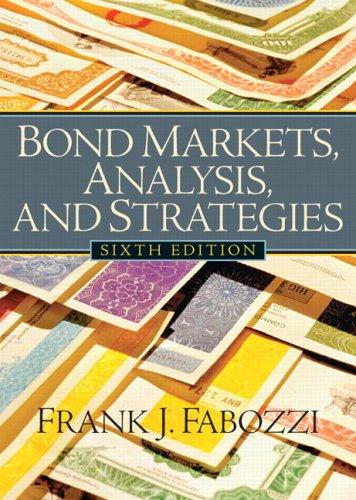Marsha Brady is a fixed-income portfolio manager. After reviewing a research report issued by a major brokerage
Question:
Marsha Brady is a fixed-income portfolio manager. After reviewing a research report issued by a major brokerage firm on Worldwide Global Communications Corporation in which it is suggested that within one year the firm's credit fundamen- tals will strengthen such that the market will demand a lower credit spread, she decides that she wants to take a credit view on that issue. Next week, Worldwide Global Communications Corporation will be com- ing to market with a 15-year senior bond issue at par with a coupon rate of 12%, offering a spread of 600 basis points over the 15-year Treasury issue. Rather than purchase the bonds, Ms. Brady prefers to express her view on the company's credit risk by entering into a total return swap that matures in one year with the reference obligation being the senior bonds that will be issued by Worldwide Global Communications Corporation. The total return swap calls for an exchange of payments semiannually with the total return receiver paying the six- month Treasury rate plus 350 basis points. The notional amount for the contract is $10 million. Suppose that over the one year, the following occurs: the six-month Treasury rate is 6% initially the six-month Treasury rate for computing the second semiannual payment is 7% at the end of one year the 14-year Treasury rate is 8% at the end of one year the credit spread for the reference obligation is 400 basis points
a. Would Brady enter the total return swap as the total return receiver or total return payer? Explain why.
b. What is the 15-year Treasury rate at the time the bonds are issued?
c. If at the end of the year the 14-year Treasury rate is 8% and the credit spread declines to 400 basis points, what will be the price of the reference obligation?
d. What is the cash flow paid for the year to the total return receiver assuming that the issuer makes the coupon payments?
c. What are the payments that will be made by the total return receiver?
f. What is the net payment made by the total return receiver?
AppendixLO1
Step by Step Answer:






